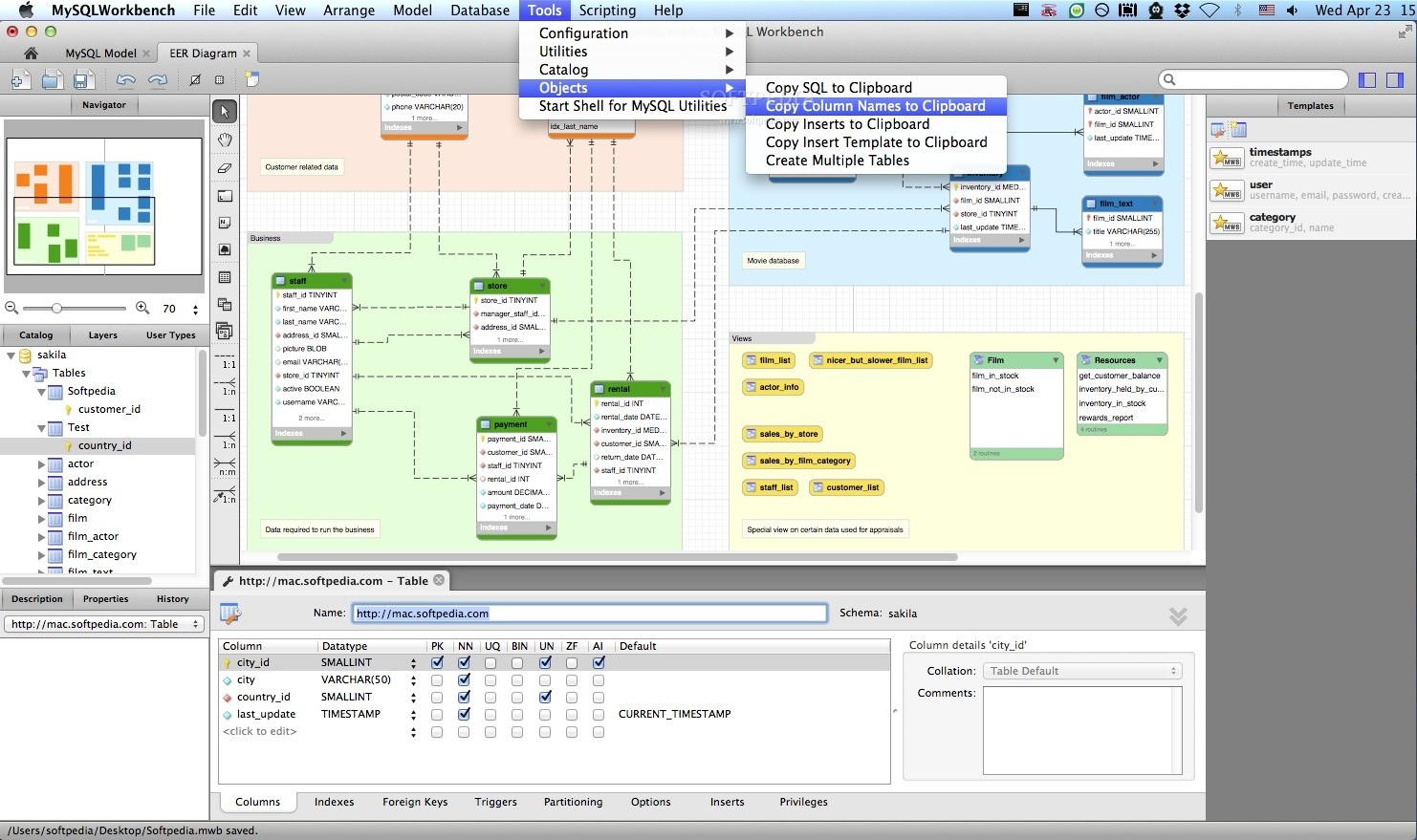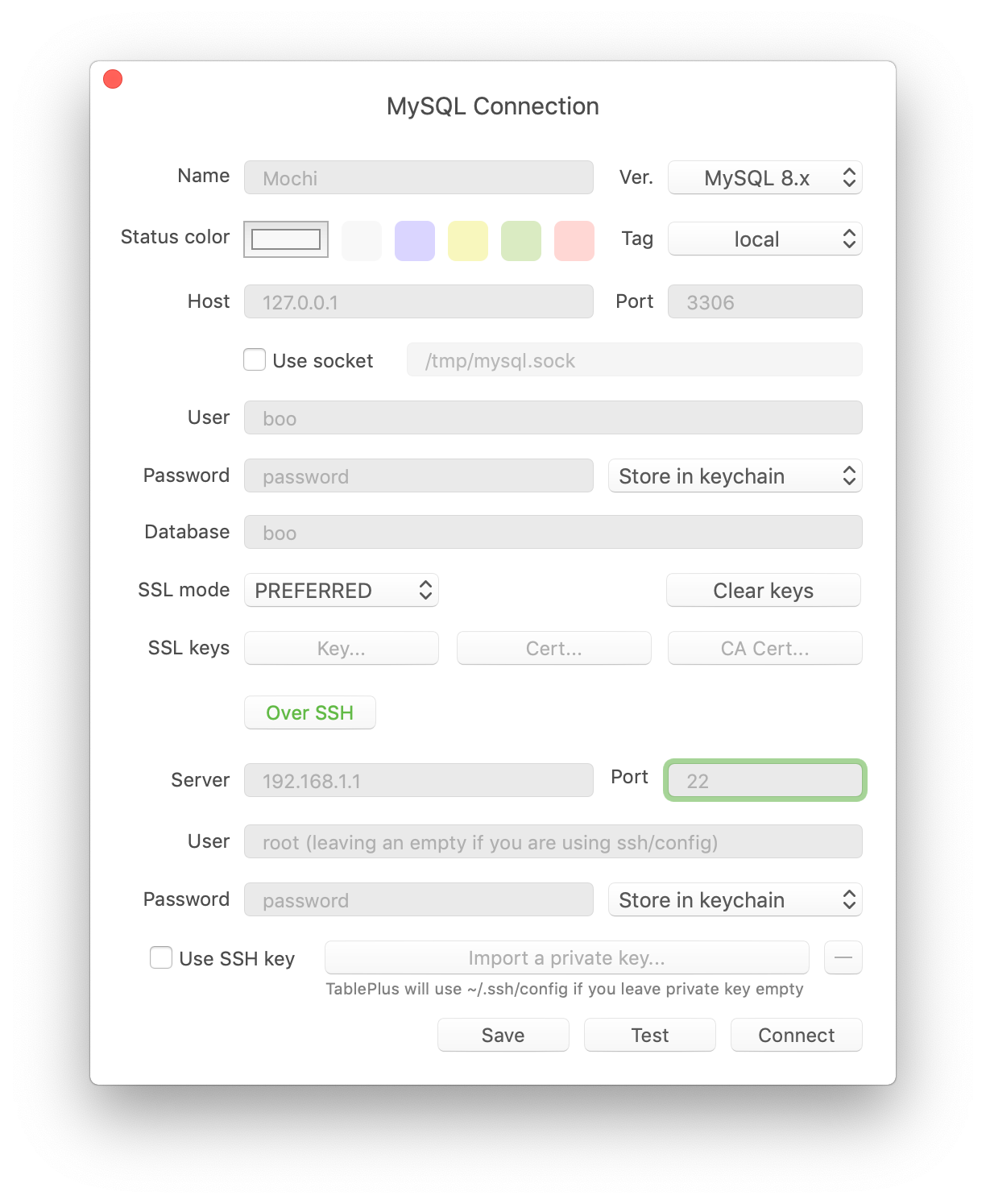Download MySQLDumper for Windows to manage the MySQL databases used on your Peal and PHP sites. (mysql-8.0.21-winx64.zip) MD5: 06d745c77b254e160807bdc2f5245352 Signature Windows (x86, 64-bit), ZIP Archive Debug Binaries & Test Suite: Jun 16, 2020: 510.6M.
I was trying to create a dump file from my MySQL database, but when I try it always gives me this error
Operation failed with exitcode 2

The version of MySQl is 5.6.10 but the version of MySQLDump is 5.5.16
Does someone know how to solve this?
As outlined by a previous answer, but just to clarify further: This is for MySQL in Windows.
I was having the exact same issue while trying to dump data out of a table on a local test server, and based on the previous answer, this is how I did it.
- Find your mysql original download folder, and look in the
/binfolder, there should be amysqldump.exe. - Go into Workbench Preferences:
Edit -> Preferences -> Administrator -> Pathto mysqldump Tool, and enter in the path to the mysqldump.exe that you found. - Save by pressing “OK” and restarting Workbench.
- Open up terminal, but typing in
cmdin the Search area of the start menu (Windows 7), and find the sql folder you found in step 1, and cd into bin. It should look likeC:...bin>. Here, type inmysqldump -t -u [username] -p [database name] [tablename]. This should dump the data from the[tablename]table into the dump folder as designated in Workbench.
Hope this helps!
Mysql Dump Free Download - SourceForge
I had the same error in MySQL Workbench.
- Find out where is the mysqldump tools provided by your install of MySQL 5.6. On my mac it was at “usr/local/mysql-5.6.10-osx10.7-x86_64/bin/mysqldump”.
- Then I set up this path in MySQL Workbench/Preferences/Administrator/Path to mysqldump Tool
- Give MySQL Workbench a restart.
It should work.
The reason for this is that MySQL 5.6 has removed support for “SET OPTION” and your mysql client tools are probably on older version. Most likely 5.5 or 5.1. There is more info about this issue on MySQL bugs website.
The quickest solution is to update your mysql client tools to 5.6 and your problem will be solved. If you are on Linux platform, here is a solution that worked great for me:
http://www.markomedia.com.au/mysqldump-mysql-5-6-problem-solved/
You must use mysqldump 5.6.x to be able to dump mysql 5.6 database, because MySQL 5.6 discontinued and removed support for SET OPTION syntax.
Under 32/64bit Windows you must do:
1.1. (32bit win) Download Windows (x86, 32-bit), ZIP Archive 5.6.19 212.3M http://dev.mysql.com/downloads/mysql/ (direct link http://dev.mysql.com/downloads/file.php?id=452188)
1.2. (64bit win) Download Windows (x86, 64-bit), ZIP Archive 5.6.19 217.2M http://dev.mysql.com/downloads/mysql/ (direct link http://dev.mysql.com/downloads/file.php?id=452189)
2. Extract mysqldump.exe from just downloaded file mysql-5.6.19-win32(64).zip (from /mysql-5.6.19-win32(64)/bin/mysqldump.exe)
3. Replace this just extracted file with your already installed mysqldump.exe file (instalation dir/mysql/bin/mysqldump.exe)
Mysqldump Database
Using Windows 7, a far easier solution for me was to find mysqldump.exe from; C:Program FilesMySQLMySQL Server 5.6binmysqldump.exe
copy it and then replace the MySQL workbench mysqldump.exe which is located in the root of workbench C:Program FilesMySQLMySQL Workbench CE 5.2.47mysqldump.exe
Restart MySQL workbench and all should work fine.
Download Mysqldump Machine
You are probably using Amazon RDS, right?
You can just get the newer version of mysqldump, v5.6 and use it instead.
Download the portable zip here and extract just the mysqlmysqldump.exe there.
http://sourceforge.net/projects/xampp/files/XAMPP%20Windows/1.8.3/
I tried it just now and it worked fine for me.
See Full List On Mariadb.com

just upgrade your mysql client How to upgrade MySQL in Linux such as Fedora with Yum which is faster and convenient
I had this problem on the Amazon EC2 acessing a RDS Mysql 5.6 database. I just ran
sudo apt-get upgrade
It didn’t update mysql client to 5.6, but mysqldump now is working fine.
For Mac it depends on your installation.
If you used a dmg file to install it, you need to find the bin directory.
mine was under /usr/local/mysql/bin
You will find mysqldump file under this folder.
Now provide this location in your
Preferences -> Administrator -> Path to mysqldump Tool as /usr/local/mysql/bin/mysqldump
You should be good to export now.
I have Mysql 5.6.12 version. SET SQL_QUOTE_SHOW_CREATE=1 is working fine in my machine.
now i am able to take a dump of sql.
mysql> SET SQL_QUOTE_SHOW_CREATE=1; Query OK, 0 rows affected (0.00
sec)
worked for me.
If you are on Linux, update mysql-client to latest version. On Ubuntu:
did the job for me.
Mine got updated to 5.5 and mysqldump now works for me. This is on Amazon RDS with MySQL 5.6.x
If you are using Window 10. Your Mysql server would have been installed in C:Program FilesMySQL directory and rest all components are installed in C:Program Files (x86)MySQL.
Go to MySql Workbench>Edit>Preferences. A window will open, click the Administrator tab and mention the path of your mysqldump.exe (which is present in C:Program FilesMySQL). Restart your workbench.
Thanks, Happy coding!!
Mariabackup
In Workbench look for Preferences: Edit -> Preferences -> Administrator -> Path to the mysqldump Tool. Browse your MySQL folder inside the bin folder and look for mysqldump.exe.
If you’re on a linux machine, this is provided by the mysql-client package. Installing that fixed the problem for me.
Tags: file, mysql, sql

Introduction
Being able to import and export your database is an important skill to have. You can use data dumps for backup and restoration purposes, allowing you to recover older copies of your database in case of an emergency. You can also use them to migrate data to a new server or development environment.
Working with database dumps in MySQL and MariaDB is fairly straightforward. This tutorial will cover how to export the database as well as import it from a dump file in MySQL and MariaDB.
Prerequisites

To import and/or export a MySQL or MariaDB database, you will need:
- Access to a Linux server running MySQL or MariaDB
- The database name and user credentials for it
Exporting the Database
The mysqldump console utility is used to export databases to SQL text files, making it relatively easy to transfer and move around. You will need the database name itself as well as the username and password to an account with privileges allowing at least full read only access to the database.
Export your database using the following command structure:
MariaDB Enterprise Backup
usernameis the username you can log in to the database withdatabase_nameis the name of the database that will be exporteddata-dump.sqlis the file in the current directory that the output will be saved to
The command will produce no visual output, but you can inspect the contents of filename.sql to check if it’s a legitimate SQL dump file by running the following command:
The top of the file should look similar to this, showing that it’s a MySQL dump for a database named database_name.
If any errors happen during the export process, mysqldump will print them clearly to the screen instead.
Importing the Database
To import an existing dump file into MySQL or MariaDB, you will have to create the new database. This is where the contents of the dump file will be imported.
First, log in to the database as root or another user with sufficient privileges to create new databases:
This will bring you into the MySQL shell prompt. Next, create a new database with the following command. In this example, the new database is called new_database:
You’ll see this output confirming that it was created.
Cached
Then exit the MySQL shell by pressing CTRL+D. From the normal command line, you can import the dump file with the following command:
usernameis the username you can log in to the database withnewdatabaseis the name of the freshly created databasedata-dump.sqlis the data dump file to be imported, located in the current directory
If the command runs successfully, it won’t produce any output. If any errors occur during the process, mysql will print them to the terminal instead. You can check that the database was imported by logging in to the MySQL shell again and inspecting the data. This can be done by selecting the new database with USE new_database and then using SHOW TABLES; or a similar command to look at some of the data.
Conclusion
You now know how to create database dumps from MySQL databases as well as how to import them again. mysqldump has multiple additional settings that may be used to alter how the dumps are created, which you can learn more about from the official mysqldump documentation page.